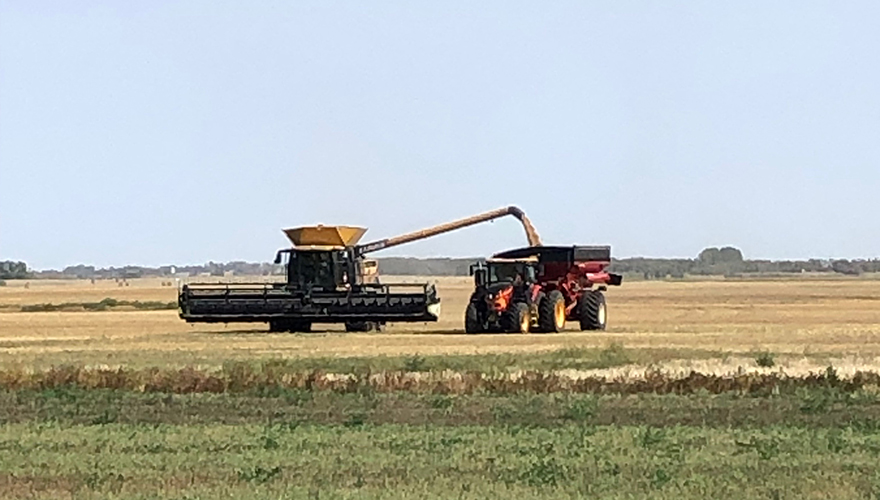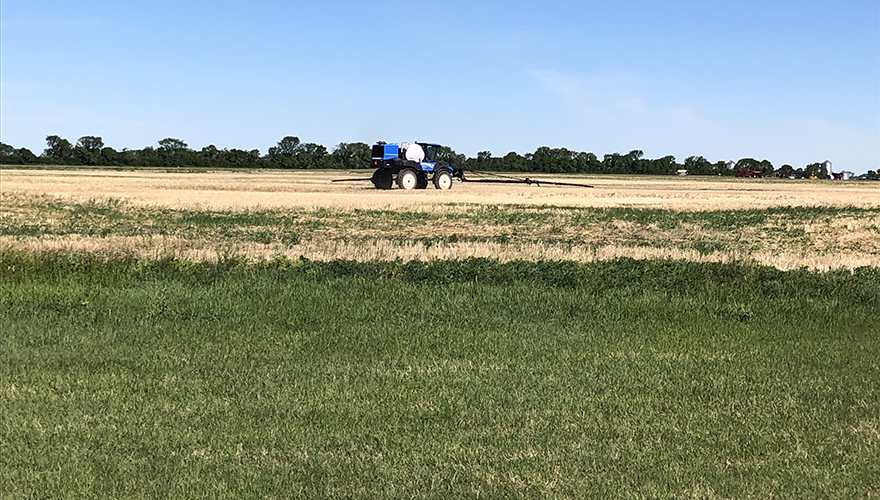Posted April 17, 2017
PREVENT SPOILAGE WITH AERATION SYSTEMS
Brought to you by Nutrien Ag Solutions and AGI - Ag Growth International
Commercial grain handling operations, including rail movement, in Western Canada have difficulty handling all of a single year’s grain production, making on-farm grain storage essential for most operations. That problem is amplified in years when the crop was big and conditions were less than ideal. Optimal storage conditions to minimize loss and retain viability of grain after harvest are largely influenced by individual factors – weather, temperature, moisture – right down to which day the crop came off the field.
There is no one-size-fits-all solution when it comes to on-farm grain storage. These solutions are advantageous for growers looking to improve returns and put product into the market at key times. But when harvest conditions are tough, having control over what’s happening inside the bin is the best defense against spoilage and potential safety hazards.
DEFEND AGAINST THE DAMP
Two of the most common, serious threats to grain quality in storage across the Prairies are pest infestations and grain moisture problems leading to mold and heated grain. Dan Brewin, director of storage and handling with Nutrien Ag Solutions, says aeration systems (which use fans to force air evenly through the grain) mitigate these risks by keeping the temperature from climbing too high.
“Having aeration systems often gives growers the opportunity to get into the field a little bit earlier at harvest,” says Brewin. “Crops can be taken off at a slightly higher moisture content, then be conditioned in the bin. From the time it goes into the bin, grain condition can actually improve through the use of these systems.”
Aeration systems work most efficiently when optimized to the size of the bin, leaving room for airflow in the peak of the structure. Which type of aeration system to choose depends on the size and style of bin it’s going into, so long as the bin is set up for it. They can either be added on to new installations, or older bins can be retrofit – including some DIY options. What all aeration systems have in common is the ability to be controlled by an operator, manually or automated, which ultimately dictates the condition of the grain by determining when the system runs and for how long.
Brewin says aeration systems make good economic sense when compared to the potential loss of a bin full of product.
“The initial capital cost of the investment is very low in relation to the value of the grain inside the bin. The investment will protect future crops going into that same bin for many years.”
BE GRAIN SAFE
Multiple dangers lurk on the inside of grain bins. At first glance, grain appears to be harmless but when thousands of bushels are inside a storage bin, it has the potential to be a danger to both health and safety. When grain is going out of condition, it heats up. Condensation begins to form on the walls and the grain clumps together. Brewin says farmers are familiar with the deaths and injuries that occur in storage bins but accidents still occur from people climbing inside to unplug a clump.
“No one should ever enter a bin full of grain,” says Brewin, adding that in spite of warnings it seems each year there are accidents involving grain entrapment. “Aeration can be helpful in mitigating the conditions to cause grain to bridge, but if the problem still occurs, do NOT enter the bin.”
Aeration systems can also help to keep mold and fungal dusts from developing. Even a small amount of spoiled grain can produce millions of tiny mold spores that can go airborne.
“Inhaling grain mold spores can cause severe reactions and even lead to hospitalization.”
THE Nutrien Ag Solutions ADVANTAGE
With a network of retails across Western Canada more than 200 strong and dedicated storage and handling staff, Nutrien Ag Solutions has the ability to make a recommendation depending on each farm’s circumstances according to Brewin.
“Farmers can pick up the phone and make one call and our staff and set-up crews would make sure they get whatever storage and handling equipment they need to be successful,” says Brewin. “We are buying the top aeration products in North America, dealing closely with the manufacturer to provide value and support that can’t be beat.”
Brewin says adding aeration systems is common practice for their team when it comes to new large bin projects. Every new large bin installation has aeration built-in. Talk to your local Nutrien Ag Solutions retail to see how a new, or retrofit, grain aeration system can save your grain. Find out more about spring grain storage management on The Grain Guardian.
FEATURED LINKS
NEWSLETTER
Want to stay caught up in all things agriculture? Sign up for the newsletter and get all the latest news straight to your inbox.
Plant Hormones
Posted April 19, 2017





